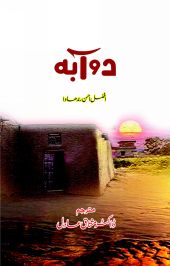مولانا عبدالسلام ندوی
گزشتہ مہینہ مولانا عبدالسلام ندوی کی وفات اردو زبان کے علمی اورادبی حلقوں کے لیے ایک بڑا الم ناک سانحہ ہے۔مرحوم کاسب سے بڑاوصف اور کمال جس میں مشکل سے ہی کوئی اُن کاحریف ہوگایہ تھا کہ وہ صرف ایک نامور مصنف، بلندپایہ ادیب اورنقد سخن کے بہترین جوہری تھے، اس حیثیت سے وہ لیلی علم وادب کومخاطب کرکے بجاطورپر کہہ سکتے تھے کہ :
’’سب سے بیگانہ ہے اے دوست شناسا تیرا‘‘
۱۹۲۸ء میں امرتسر میں ندوۃ العلماء کے سالانہ جلسہ کے موقع پر راقم الحروف کو مولانا ابوالجلال ندوی اورمولانا نورالحق ندوی جواُس وقت نئے نئے مصر سے واپس آئے تھے ان دونوں کی معیت میں مولانا مرحوم سے ملاقات کا پہلا اورآخری بھی، شرف حاصل ہوا تھا۔یہ ملاقات جس طرح ہوئی،مولانا کو جس وضع قطع میں دیکھااوراُن سے جو گفتگو ہوئی، اگرکوئی اورہوتاتویقینا بدگمان ہوجاتالیکن میرے دل پراُس کاخاص اثر ہوا اوراُن کے فطری مصنف اورادیب ہونے کا جزم ہوگیا اوربے ساختہ زبان سے تمکین دہلوی کایہ شعر نکل گیا:
آنکھ پڑتی ہے کہیں پاؤں کہیں پڑتا ہے
سب کی ہے تم کو خبر، اپنی خبر کچھ بھی نہیں
مرحوم کی عبارت سادہ مگر شگفتہ اوربہت سلجھی ہوئی ہوتی تھی۔ جس موضوع پرگفتگو کرتے تھے اُس کے تمام پہلوؤں کامکمل تجزیہ کرکے ہرپہلو پرسیرحاصل بحث کرتے تھے، اس لیے اُن کاطرزنگارش صرف پڑھنے میں دلچسپ ودل نشین نہیں تھا بلکہ یقین آفرین بھی تھا۔مولانا شبلی نے اپنے شاگرد کے اس وصف طبعی کو پہلے ہی تاڑلیا تھا اوروہ اس کے بڑے قدران تھے۔چنانچہ اُن کے مکاتیب میں مرحوم کی نسبت جو حوصلہ افزاتاثرات وخیالات ملتے ہیں وہ اُن کے کسی دوسرے شاگرد یہاں تک کہ سید صاحب کے متعلق بھی نہیں ملتے۔ بیسوں مقالات کے علاوہ مرحوم کی مستقل تصنیفات تاریخ وفلسفہ،اخلاق،شعروادب اورتنقید سے متعلق ہیں،اردو ادب کاایسا قیمتی سرمایہ ہیں...
This study examines the association of living areas (slum and non-slum) with the selected public health-related variables in the presence of socioeconomic variables among married women and also having a child. A total of 150 women aged 18 to 49 are selected of which 50 women from slums and 100 women are from non-slum areas of Multan by applying the cluster and random sampling techniques. The cross-tabulation method is used to find the results. The dependent variable is Body Mass Index (BMI) and it is analyzed with the socio-economic variables such as mass media index, household characteristics and education. The findings exhibit that the BMI of the women living in the slum areas is low due to a low level of education, lack of mass media access, bad household structures, and poor or ignorant area. The women of the slum area have fewer mass media access, poor status of household characteristics and less education as compared to the women living in the non-slum areas. BMI is significantly affected by area, women's education and household characteristics except for physical work, job status, mass media access and husband education. The findings of this study suggest that to provide health facilities or to reduce the gap in public health, education, mass media access and households characteristics might be considered while making any decision related to the slum and non-slum areas.
Oral squamous cell carcinoma (OSCC) is the most common malignancy in head and neck region with an occurrence rate of 500,000 per year. Higher incidence and mortality rates have been observed in south-east Asia including Pakistan. The common sub-site found in Pakistani population and other physiological variations are strongly linked with the increasing use of smokeless tobaccos (SLTs). Early diagnosis plays a key role in treatment and monitoring of any cancer. Histopathology is the only diagnostic method recommended for OSCC which is not very effective for early stage diagnosis. Thus, biomarker studies have been conducted all around the world using proteomics techniques in search of potential candidate diagnostic biomarkers. In current study, we have performed comparative proteomic analysis using buccal mucosa OSCC tissue samples and their adjacent normal mucosa. The samples were subjected to two-dimensional gel electrophoresis and differentially expressed spots were selected for Mass spectrometric analysis. We have identified seventeen proteins that were consistently differentially expressed among most of the samples analyzed. The differentially expressed proteins that have been uniquely identified in this study include Serum albumin (ALBU), Ig Kappa chain C region (IGKC), and Isoform 2 of fructose bisphosphate aldolase A (ALDOA). We suggest that further research would be required to investigate their role in carcinogenesis and whether any of these could serve as potential biomarker. The significantly altered expression of Calreticulin (CALR), Heat shock protein beta 1 (HSPB1), Heat shock protein 70 (HSC70), Cytokeratin-8 (KRT8), Cytokeratin-16 (KRT16), Cytokeratin-14 (KRT14), Cytokeratin-17 (KRT17), and 14-3-3σ/Stratifin (SFN) found in our study strongly supported the earlier reported results. We also performed immunohistochemistry (IHC) to confirm the higher expression of SFN as potential biomarker. SFN plays an important role in p53 apoptotic regulation and therefore findings of our study reveal and suggest it as a potential candidate biomarker in Pakistani population. XII Considering the association of oxidative stress with cancer progression, we also studied markers of oxidative stress in OSCC including Paraoxonase1 (PON1), Reactive oxygen species (ROS), and Malondialdehyde (MDA). We found significant relationship among oxidative stress indicators, particularly PON1 with OSCC suggesting PON1 as predictive marker.



